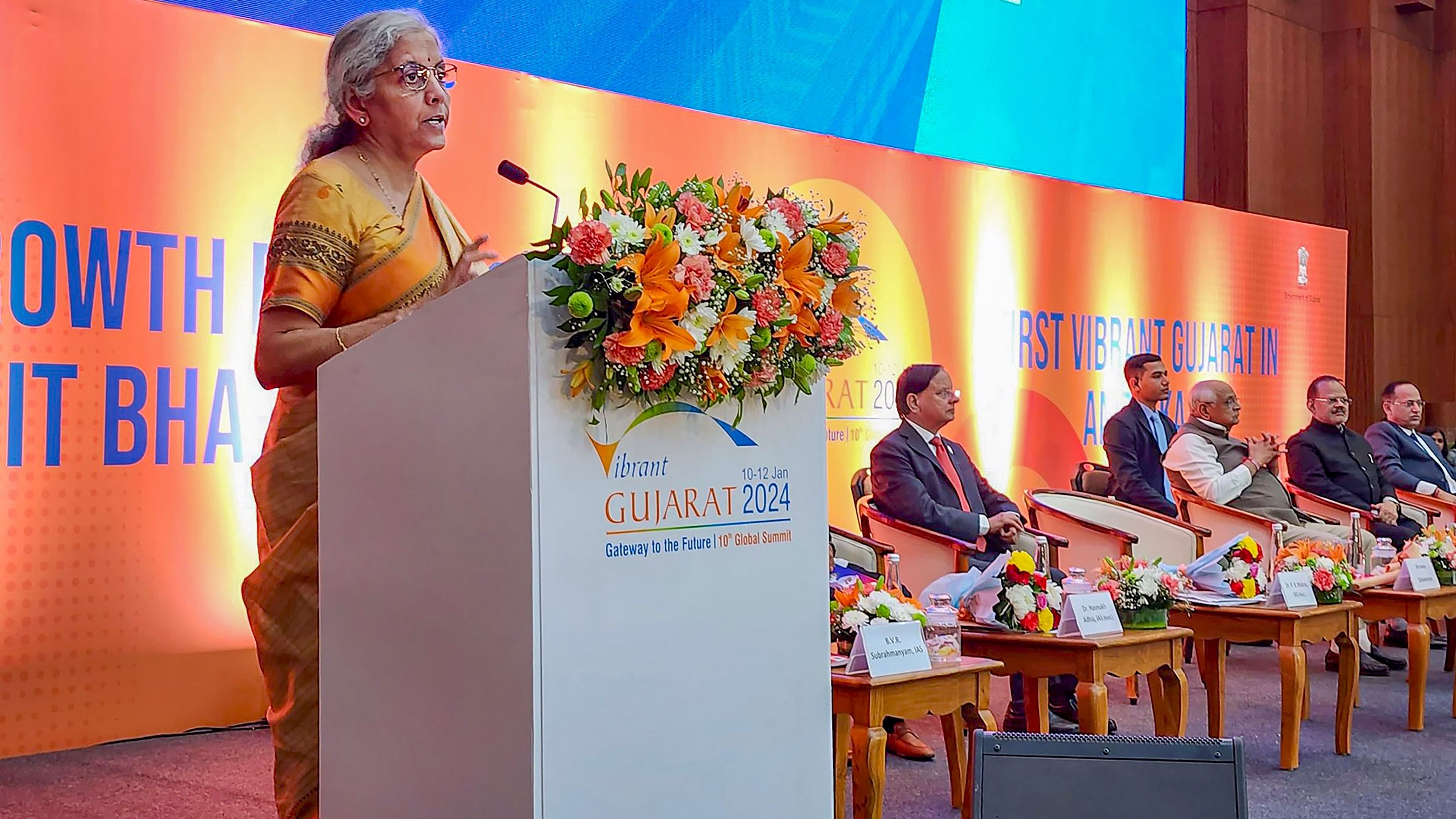
FM Nirmala Sitharaman speaking at the Vibrant Gujarat Global Summit 2024, in Gandhinagar, on Wednesday.
Credit: PTI Photo
It will be 2027-28 when India touches its goal post of $5-trillion gross domestic product (GDP), and becomes the third largest economy, Union Finance Minister Nirmala Sitharaman said on Wednesday.
This is a departure from Prime Minister Narendra Modi’s earlier target of hitting the $5 trillion mark by 2024-25. The new target mentioned by Sitharaman seems official as even members of the Economic Advisory Council to the PM have claimed it in public.
Speaking at the Vibrant Gujarat Summit in Gandhinagar, Sitharaman talked about India being behind just the US and China, She even reiterated the other aspirational number of taking the Indian economy to $30 trillion by 2047, when the country celebrates its 100 years of independence.
“By 2027-28, it is believed that, and surely we will be able to reach the third-largest economy goal. Our GDP will cross $5 trillion by that time,” she said.
A plan was outlined in 2018 to make India a $5 trillion economy by 2025. As per a statement titled ‘Vision of a USD 5 Trillion Indian Economy’ released by the Ministry of Commerce and Industry in October 2018, a target was set to achieve $1 trillion from agriculture and allied activities, $1 trillion from manufacturing and $3 trillion from services.
As per data released by the National Statistical Office (NSO) last week, India’s GDP is estimated to reach Rs 296.58 lakh crore in the financial year 2023-24 at current prices. Taking Rs 83 for a dollar as exchange rate, the size of the Indian economy would be around $3.57 trillion in the current financial year.
India is currently the fifth largest economy in the world after the US, China, Japan and Germany. By 2027-28, India is projected to surpass Germany and Japan to become the third largest economy. Referring to Viksit Bharat (developed India) goal, Sitharaman said, “By 2047, it is conservative estimate that we will reach at least $30 trillion in terms of economy.”
“One emphasis of achieving the Viksit Bharat goal is to remove the colonial mindset which has been in us and is important for us to get over. People, the states, stakeholders, central government, all of us will have to work to achieve that,” she added.
The finance minister claimed that foreign direct investment (FDI) inflows into India have surged since 2014 due to greater certainty, convenience and ease of doing business.
She noted that India received $919 billion FDI between April 2000 and March 2023. Out of this, $595 billion or 65% of the total came in the nine years period beginning 2014.